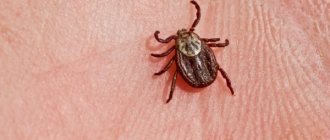What is bronchiectasis (bronchiectasis)?
The pathology is based on the destruction of the walls of the bronchial tree, which leads to the appearance of saccular or tubular expansions, which are called bronchiectasis.
They can be in one or several segments (lobes of the lung), most often found in the lower sections.
The disease is accompanied by a recurrent purulent-inflammatory process. Bronchiectasis is filled with mucous contents, which become infected and excreted in the form of sputum.
If for some reason the lumen of the bronchus becomes clogged, its walls swell, and an additional network of capillaries develops in these areas. Pathological changes lead to hemoptysis and pulmonary hemorrhage.
Bronchiectasis over time provokes pathological changes in the lung tissue.
Prevention
Prevention of acquired bronchiectasis involves timely treatment of infectious and inflammatory processes in the pulmonary system. For this purpose, vaccination against measles , whooping cough , and pneumococcal infection . An important tool in secondary prevention is the anti-pneumococcal vaccine , which can reduce the frequency of exacerbations and avoid the development of complications. Another method of prevention is hardening with physical therapy exercises.
Etiology
Primary bronchiectasis appears as a result of genetically determined inferiority of the bronchial walls - this is weakness of smooth muscle and connective tissue, insufficiency of protective factors.
Congenital anomalies of the bronchial tree also lead to the appearance of expansions. Primary bronchiectasis is less common than secondary bronchiectasis.
The causes of acquired bronchiectasis are previous inflammatory diseases (bronchitis, pulmonary tuberculosis, pneumonia, lung abscesses), tumor lesions.
There have been cases of the disease after a foreign body enters the bronchi.
Contributing factors are:
- immunodeficiency states;
- smoking during pregnancy and acute respiratory viral infections during this period;
- infections of the nasopharynx in children (sinusitis , tonsillitis, proliferation of adenoid tissue).
Incidence (per 100,000 people)
| Men | Women | |||||||||||||
| Age, years | 0-1 | 1-3 | 3-14 | 14-25 | 25-40 | 40-60 | 60 + | 0-1 | 1-3 | 3-14 | 14-25 | 25-40 | 40-60 | 60 + |
| Number of sick people | 0 | 0 | 0 | 96.1 | 96.1 | 99.3 | 108 | 0 | 0 | 0 | 84 | 84 | 86 | 86 |
Pathogenesis
Factors in the development of the disease include:
- impaired bronchial patency (compression by the hilar lymph nodes, blockage with a mucous plug, obstruction), as a result of which the discharge of secretions is disrupted;
- stagnation of the contents of the bronchi occurs, microorganisms multiply in it, and inflammation develops;
- obstructive atelectasis occurs - shrinkage of the area of the lung to which the altered bronchus leads.
Classification
- Bronchiectasis comes in the form of a sac, tube, spindle and mixed form.
- By origin - congenital and acquired anomalies.
- According to the severity of the disease - mild, moderate, severe, complicated form.
- The phase is divided into exacerbation and remission.
- Depending on the distribution - unilateral or bilateral damage.
Classification of complications: hemoptysis, development of cor pulmonale, amyloidosis, pulmonary heart failure.
Causes of bronchiectasis
Most often, bronchiectasis occurs in childhood or adolescence, and male patients are most susceptible to the disease. The reasons for this dependence and the exact data on the appearance and development of the disease are unknown to scientists today, however, the following factors significantly increase the risk of developing a pathological condition:
Weakened immunity is the cause of bronchiectasis
- weakened immunity and exhaustion of the body;
- diffuse panbronchiolitis;
- diseases transmitted by inheritance;
- narrowing of the lumen due to external and internal scars.
Congenital bronchiectasis in the lungs occurs when pressure has been applied to the fetus in the womb, causing the respiratory system to become deformed and damaged. The reason may be incorrect behavior of the expectant mother who consumes alcoholic beverages, tobacco products or drugs during pregnancy.
Symptoms of bronchiectasis
Symptoms do not depend on whether the defect is congenital or acquired. The main role is played by the prevalence of the lesion, the degree of bronchial dilatation, the presence of pneumosclerosis, and atelectasis. Small bronchiectasis can exist for a long time without clinical symptoms.
The main symptom of the disease is a cough with purulent discharge. Exacerbations occur against the background of a cold or viral disease. In mild forms, the temperature remains subfebrile; in severe forms, fever develops. Symptoms either worsen or subside, and the disease is recurrent in nature.
With bronchiectasis, a lot of sputum is produced - from 20 ml to half a liter, it comes out “a mouthful”. Its discharge increases in the morning or when the body is given the “correct” position - on the sore side with the head down. When standing, the sputum is divided into 2 layers: the upper one is opalescent, contains an admixture of saliva, the lower one is purulent.
In the chronic form of the disease, the sputum acquires a foul odor, and patients also complain of a putrid odor in the mouth.
Associated symptoms of the disease:
- shortness of breath accompanying physical activity;
- cyanosis of the nasolabial triangle - in the presence of pulmonary heart failure;
- anemia;
- sallow complexion;
- weight loss, lack of height and weight;
- pain in the sternum - if the pleura is involved in the process.
Changes in nails in the form of “hour glasses” are now rare and only in severe cases. In the “dry” form of the disease, there may be no purulent discharge; the disease is diagnosed when hemoptysis appears.
Course, duration, complications
During the period of its development in the corresponding diseases (bronchitis, pneumonia, pleurisy), bronchiectasis completely eludes observation; Moreover, subsequently, when they produce phenomena, they can remain stationary for a long time, even decades, i.e., not cause particularly life-threatening phenomena, although usually the degree of expansion at this time increases.
From time to time, inflammatory phenomena worsen, cough, shortness of breath temporarily intensify; emphysema develops, the heart enlarges and becomes weaker, sometimes putrefactive bronchitis also develops, which for some time worsens the patient’s condition, but again passes safely and gives way to the previous phenomena; little by little, the degeneration and weakening of the heart progresses, other organs (liver, kidneys) are involved, general dropsy appears and, ultimately, after long fluctuations in the form of either improvement or deterioration, death occurs. This, so to speak, normal course of bronchiectasis can last a very long time.
Sometimes anatomical changes may progress more quickly, and a number of more or less frequent complications may worsen the disease and hasten death. The most important complication is putrefactive decomposition of the bronchial compartment, putrefactive bronchitis with successive catarrhal pneumonia and, ultimately, gangrene of the lungs; further, due to the transition of inflammation to the pleura - purulent or putrefactive pleurisy. The development of pneumothorax is very rare.
The simultaneous existence of tuberculosis and bronchiectasis is a relatively common phenomenon, and often we are dealing with the development of bronchial dilations in the lungs affected by tuberculosis, less often with the addition of tuberculosis to pre-existing bronchiectasis.
The outcome of recovery without adequate treatment is very rare.
Diagnosis of bronchiectasis
During the examination of the patient, the following data are observed:
- on auscultation, various wet and dry rales are heard, they decrease or disappear after the sputum is removed;
- upon percussion, dullness of sound from the affected lung is observed;
- impaired mobility of the chest, lag of the affected side in the act of breathing.
X-ray of the lungs reveals a change in the pattern, “amputation” of the root of the lung, compression of the lung tissue by atelectasis.
During bronchoscopy, the presence of abundant viscous secretion and the phenomenon of endobronchitis are detected. The method is not only diagnostic, but also therapeutic. During bronchoscopy, material is taken for bacteriological and cytological examination, and the bronchial tree is sanitized with the infusion of antiseptic, mucolytic agents, and antibiotics.
Bronchography is the study of the bronchial tree using a contrast agent. The images reveal bronchiectasis, determine their shape, quantity, location and size. The areas of the bronchi located below the expansions are not filled with a radiopaque substance, which is one of the diagnostic signs. Before performing bronchography, it is necessary to carry out sanitation using the bronchoscopic method.
Computed tomography most accurately shows not only damage to large bronchi, but also small bronchioles, where the contrast agent does not enter. In addition, CT does not require anesthesia, as during bronchography.
Treatment of bronchiectasis
It is carried out using conservative and surgical methods.
Conservative therapy in the presence of purulent sputum involves the administration of antibiotics orally and intravenously. A group of cephalosporins and semisynthetic penicillins is used. At the same time, drainage and sanitation of the bronchial tree are carried out using a bronchoscope - washing and removal of sputum. Antibiotics, enzymes (trypsin), and mucolytics (bromhexine, acetylcysteine) are infused into the bronchi.
To improve sputum discharge, patients are prescribed drainage by raising the foot end of the bed. Other methods are also recommended:
- vibration massage;
- breathing exercises;
- inhalation with a nebulizer.
The disease can be treated with physiotherapy methods outside the period of exacerbation, when there is no fever and purulent discharge from the bronchi.
Surgical treatment is resorted to when conservative methods are ineffective and the patient’s condition worsens. A lobe of the lung is removed - a lobectomy. With a bilateral process, the operation occurs in stages: first, a section of the lung is removed on one side, and after a few months, on the other. Sometimes surgery is performed for life-saving reasons when there is massive pulmonary hemorrhage.
Forecast
Recently, the prognosis has been considered favorable when specially designed measures are taken to sanitize the tracheobronchial tree. Preventing exacerbations also has a positive effect on prognosis.
A fairly large number of patients live to old and even senile age, although the quality of life gradually deteriorates due to increasing cardiopulmonary failure.
The development of chronic pulmonary heart disease can cause disability and permanent disability. After surgical intervention, recovery is recorded in 75% of cases, the remaining 25% of patients note a significant improvement in their well-being.









